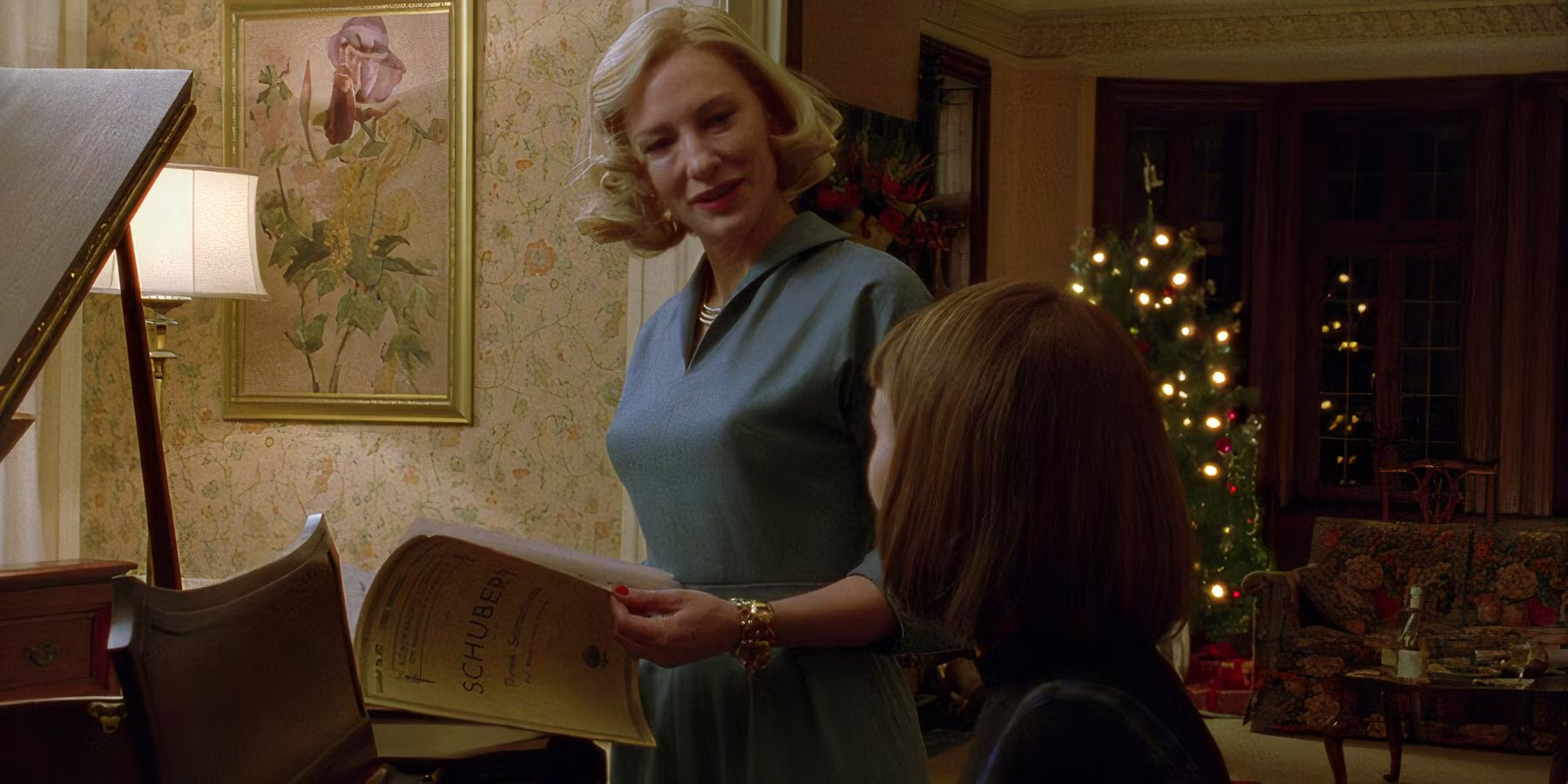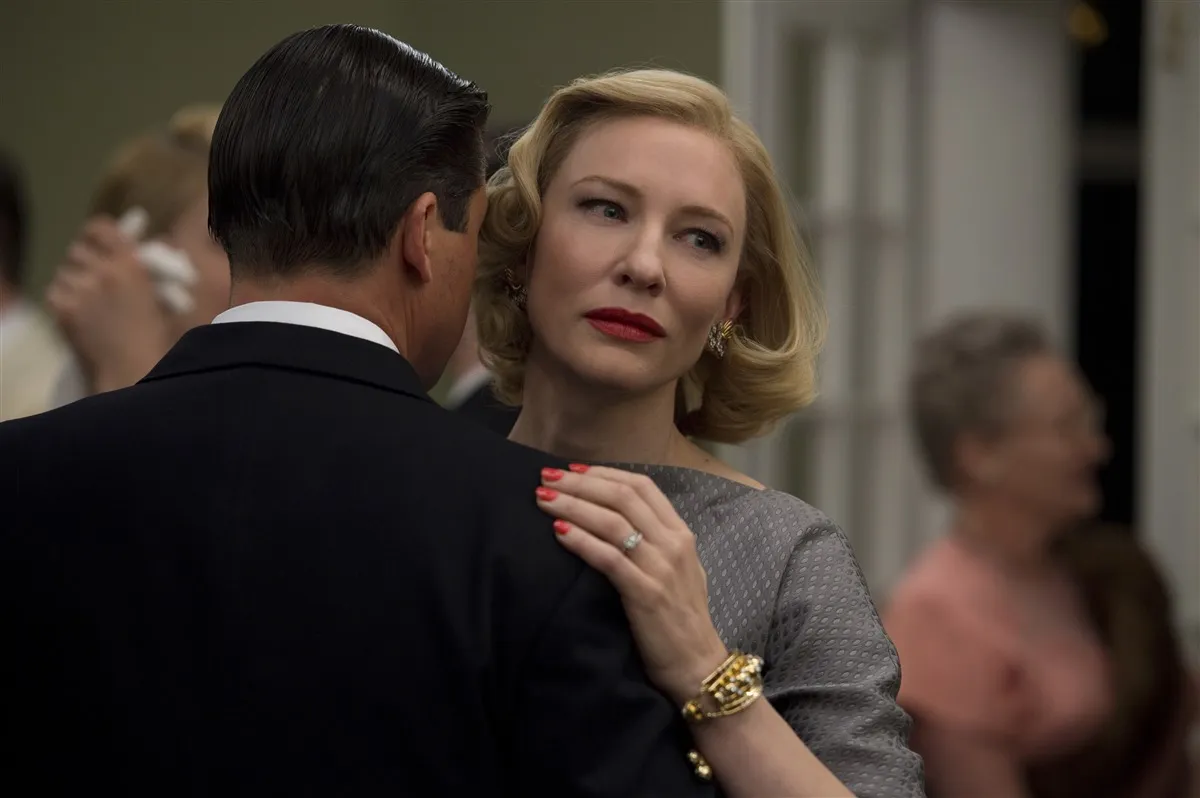The 2015 film Carol, directed by Todd Haynes, tells the story of Carol Aird (Cate Blanchett) and Therese Belivet (Rooney Mara), whose romance unfolds in 1952 New York. Carol is going through a divorce from her husband, Harge, while Therese is in an unfulfilling relationship with her boyfriend, Richard. Their connection begins when Carol meets Therese at a department store, and their relationship deepens despite societal constraints on same-sex love during the era.
During the 1950s, being openly gay was socially unacceptable, and for Carol, pursuing a relationship with Therese meant risking custody of her daughter, Rindy. Harge, who already harbored suspicions due to Carol’s past affair with her friend Abby, becomes more controlling. The film, adapted from Patricia Highsmith’s novel The Price of Salt, was widely acclaimed for its depiction of LGBTQ+ struggles and earned multiple award nominations, though it did not win.
As Carol and Therese begin to embrace their feelings, their relationship is abruptly disrupted. On New Year’s Eve, after their first night of intimacy, Carol discovers that a private investigator hired by Harge has gathered evidence against her. Realizing that this proof could be used to take Rindy away from her, Carol makes the painful decision to leave Therese to protect her parental rights.

Carol’s Sacrifices and Choices in Balancing Motherhood Love and Personal Identity
Carol’s ultimate priority is her daughter, Rindy, which leads her to end her relationship with Therese. She understands that continuing the affair would give Harge the leverage he needs to take full custody. Despite loving Therese, Carol chooses to distance herself to maintain her role as a mother, demonstrating the emotional sacrifices she must make.
In a surprising turn, Carol later chooses to give up custody of Rindy rather than live a life hiding her true self. Initially, she fought hard for custody, but realizing that doing so would mean conforming to societal norms and suppressing her identity, she opts for visitation rights instead. This decision reflects Carol’s ultimate realization that she cannot sacrifice her happiness and authenticity.
After Carol gives up custody, she reaches out to Therese and invites her to move in with her. However, Therese, still hurt from their separation, declines. Later, at a party, Therese feels disconnected from the other guests and recognizes that her bond with Carol is unlike any other. This realization prompts her to reconsider Carol’s invitation, indicating that their love remains strong.
The film concludes with Therese arriving at the Oak Room, where Carol is waiting. Though hesitant, Therese walks toward Carol’s table, suggesting the possibility of reconciliation. The ending is left deliberately open-ended, allowing viewers to interpret whether Carol and Therese will rekindle their romance fully or take things slowly to rebuild trust.

Love Sacrifice and Acceptance in Carol’s Impact on Queer Representation in Cinema
Beyond the romance, Carol highlights the struggle of queer individuals seeking love and acceptance in a society that rejects them. Both Carol and Therese were unhappy in their previous relationships, but finding each other allowed them to experience genuine connection. The film emphasizes the sacrifices made for love and self-acceptance.
While Carol remains largely faithful to The Price of Salt, some key differences exist. The film places greater emphasis on Carol’s daughter, Rindy, making Carol’s custody battle more emotionally impactful. Additionally, in the novel, Therese is more openly tested by the possibility of another romantic interest, whereas the film keeps the focus on Carol and Therese’s relationship.
The film’s ambiguous yet hopeful ending was well received, distinguishing Carol from many past LGBTQ+ stories that ended in tragedy. Carol was nominated for six Academy Awards, including Best Actress and Best Supporting Actress. While it did not win, it remains a milestone in LGBTQ+ cinema for its nuanced portrayal of love, loss, and self-acceptance. The film’s lasting impact continues to resonate with audiences, proving the importance of telling diverse love stories on screen.



